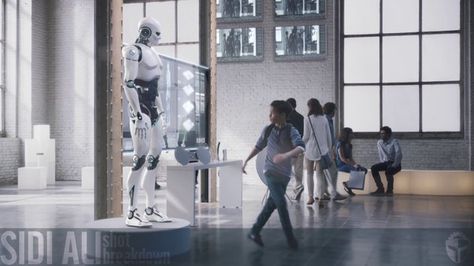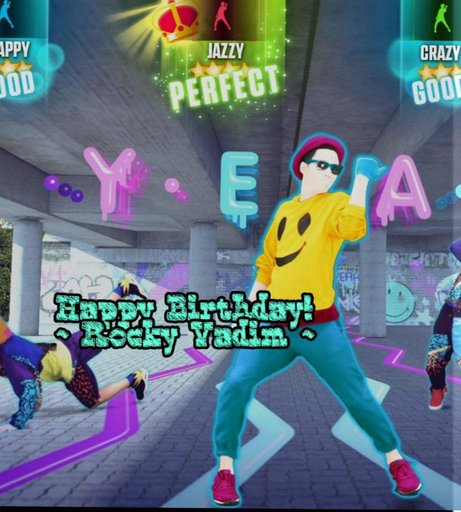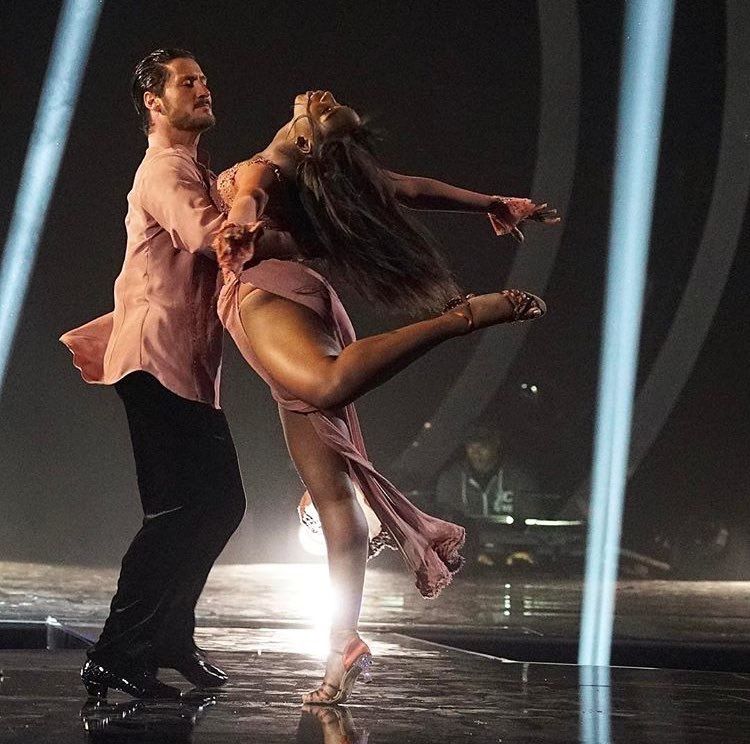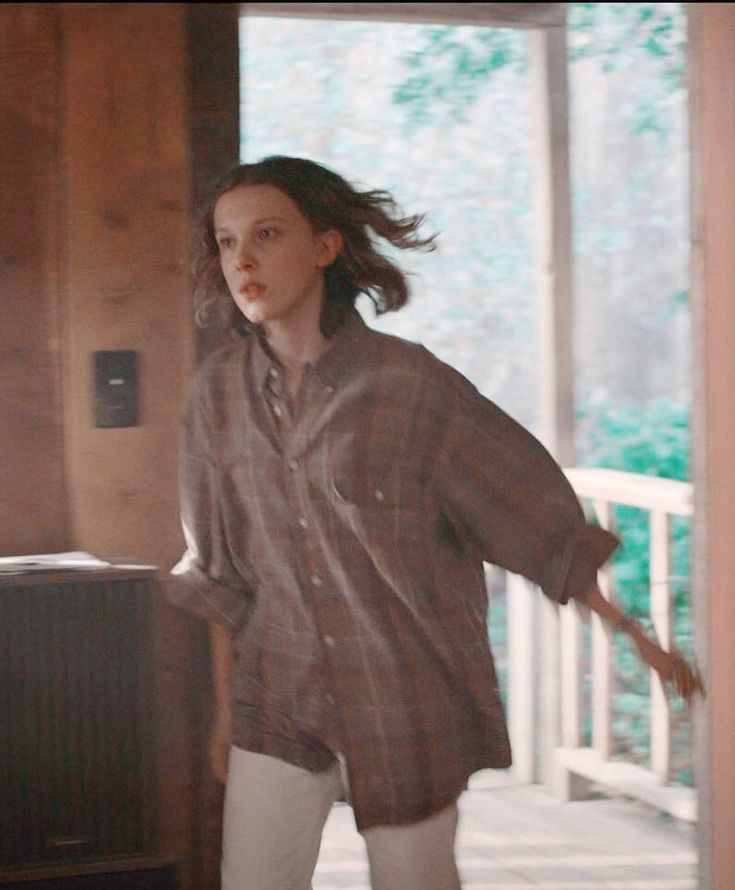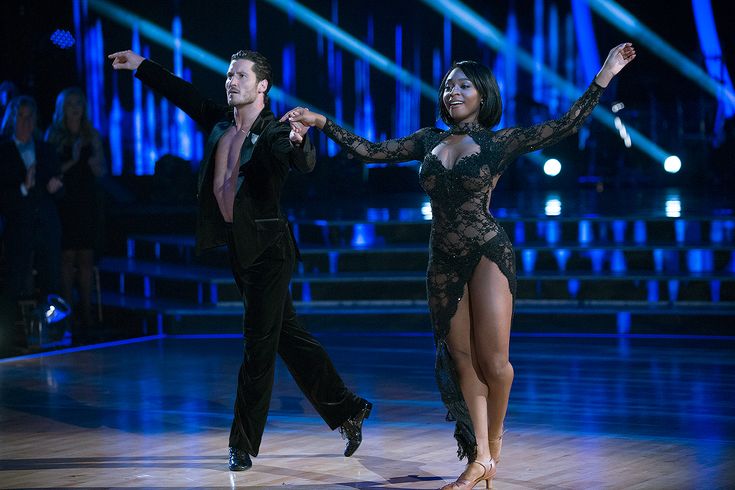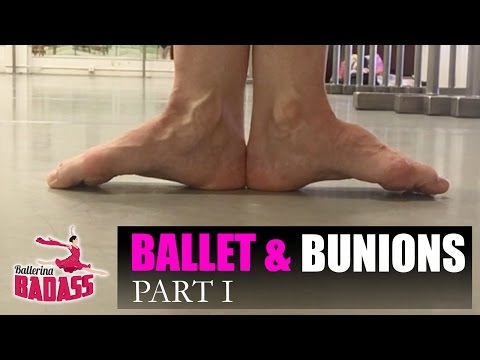How to remix a dance song
21 Helpful Tips for Making Remixes
So you want to remix a song?
Well, there’s good news and bad news.
The bad news is that unless you know the fundamentals of electronic music production, you’re going to have a hard time. The good news is that once you do, making a remix is pretty damn straightforward.
So what if you don’t know the fundamentals?
Well, you’ve come to the right place. In this guide, I’ll cover 21 tips to help you on your way, covering topics like:
- How making a remix/bootleg is different from an original
- Thinking ahead to create remixes faster (instead of wasting time)
- Creative ways to mangle stems (that most producers neglect)
- Incorporating your signature sound into a remix
- Why using fewer stems can help you make better remixes
Whether you’re remixing a song for a competition, have been contracted an official remix for a release, or cooking up a cheeky bootleg of a popular song, these tips are for you. Read on to learn how to remix a song.
Note: If you’re a new producer, I’ve put together a free 50-page remix guide on everything you need to know about remixing. This thing will get you set up with making remixes in no time.
1. Pick the Right Song to RemixPick a song that you think would benefit from a remix. You’re more likely to follow through with the remix if you like the original song.
This is even more important if you’re making a bootleg and don’t have access to any stems; you need to pick a song that leaves room for work to be done.
As great as Iglooghost’s music is, this one would be tough to remix well.
That’s why acoustic/minimal songs are great to remix. Petit Biscuit’s ‘Sunset Lover’ has such a strong hook but a lot of creative potential, which is why there have been a few remixes of it.
Note: this also applies when being asked to do remixes. If a label asks you to do a remix and you aren’t a fan of it, why not ask if there are other releases that need to be remixed?
2. Listen for the GapsAfter choosing a song to remix, take a good listen to the original and write down any ideas that come to mind.
- Maybe you like the chorus but feel it needs stronger drums or a heavier bassline.
- Perhaps the verse is too long for your liking.
- You could even replace the existing melody with a more unique one.
Whatever comes to mind, write it down and take notes. You’ll use them when you start working on your remix.
You’ll use them when you start working on your remix.
Having a general plan that you can refer back to when stuck in a rut is invaluable. It helps you stay on task and work on the important. And despite what many argue, planning does not inhibit creativity!
Before starting a remix, why not do a bit of brainstorming? If you’ve got ideas from tip #2, then this is the time to write them down.
Even just a few ideas are fine!The result? You’ll sit down to produce your remix with clear intentions and objectives instead of blankly staring at the screen feeling sorry for yourself.
Tip: Consider the audience. If you’re trying to win a remix contest or gain attention from the original artist, think about how that should influence the remix. Are they looking for a club friendly remix, or something more radio friendly? Keeping these in mind will increase your chance of success.
4. Listen to Other RemixesListening to other remixes is a great way to spark some thought and creativity. I recommend listening to remixes of the same song you’re trying to remix, or remixes of similar songs.
I recommend listening to remixes of the same song you’re trying to remix, or remixes of similar songs.
Just be careful when doing this as it’s easy to end up copying the remix too closely. There’s nothing wrong with being inspired by a remix and gathering a few ideas, but be wary of similarity.
5. Cut and Choose Your Material (Bootlegs)If you don’t have access to an acapella or any other stems, you’re going to need to identify which parts of the original track you want to, and can, use.
You’ll find that certain sections can’t be used at all, simply because there’s too much going on. I might, for example, take out the intro, outro, and choruses of an original track and only use the breakdown which contains a vocal, then build upon that.
Note: some songs have very little going on, e.g., piano and vocals. These tracks are a joy to bootleg as a lot of the content can be used.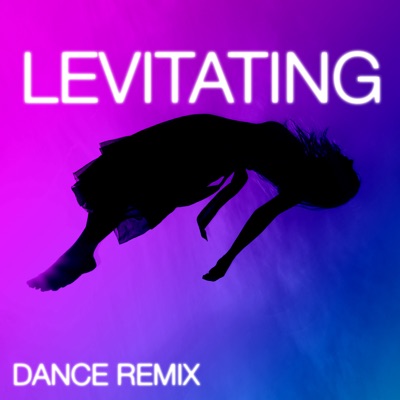
Respect the original track and its content and you’ll have a much easier time remixing it.
This is why working with the material given to you instead of against it is essential.
Flume’s remix of ‘You & Me’ by Disclosure is a great example of this – even though it’s quite different from the original it doesn’t shy away from featuring that main vocal hook and the background vocal effects.
It isn’t wise to turn an original track that’s in 4/4 time signature into 3/4, and a label won’t accept your “remix” if there isn’t a trace of the original track in it. Respect the original and work with the content given to you.
Tip: Listen through the stems and find ones that inspire you. Delete the rest, and build upon those.
7. Arrange your remix ASAPOne of the main reasons people don’t finish remixes is because they don’t get the arrangement down soon enough. Just like building a game plan, the arrangement gives you a sense of direction and allows you to step back to look at how your remix is developing as a whole.
As soon as you have ideas down, sketch out a basic arrangement. You should have it down quicker than you would normally when working on an original, because you already have a few ideas handed to you.
Note: I find it helpful to drag the original track/vocal into my DAW, marking each section of the song. This way, I have the arrangement in place from the start. I may change the arrangement later on in the production process, but I benefit from building on a solid foundation.
Want tips on how to write and arrange better music? Check out Songwriting For Producers.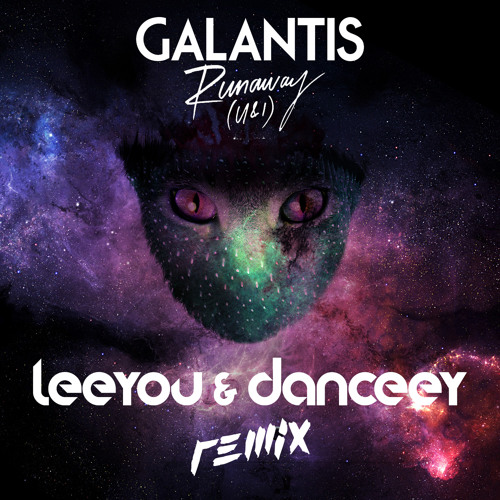
This was brought to my attention quite recently as I listened to Estiva’s remix of Only For You by Mat Zo. As you can hear, he included the melody from Lucid Dreams, which is one of Mat Zo’s other popular tracks from the same album. You can hear it at 7 seconds in:
Heard any other remixes that do the same thing? Let me know in the comments!
9. Keep it SimilarA remix doesn’t have to be incredibly contrasted to the original. Sometimes you might just want to add a little extra to the original, or expand on ideas.
For example, you’ll often hear remixes where the artist has changed just the bassline and drums, but kept the overall vibe of the song. This is the case in What So Not’s remix of ‘Major Lazer – Get Free’:
This is the case in What So Not’s remix of ‘Major Lazer – Get Free’:
This doesn’t work for every remix, but sometimes it’s exactly what’s needed. Don’t be afraid to keep it similar and add a slight touch.
10. Use Parts of the Original TrackUsing parts of the original track for fills and transitions is a great way to spice up your remix.
For example, you could take 1 bar of the original, stick it at the end of a 16-bar phrase in your remix, automate some phaser and filters to create an awesome transitional effect. There are many other ways to use the original audio, so get creative!
Oh, you want some more ideas?
- Pitch shift syllables or note stabs from the original to use in build-ups.

- Reverse bass and synth sounds from the original to add complexity and flavor.
- Sample drum sounds from the original to add another layer of familiarity.
Want to impress the listener? Get creative with stems! You can make stems your own with enough processing. Reverse and chop up acapellas, apply heavy distortion to bass sounds, the possibilities are endless.
Warping and time-stretching options are fun to play with in your DAW.A few ideas to get you started…
- Use parts of the bass stem(s) to fill in your bassline groove.
- Chop, loop and reverse slices of the original vocal to create your own melodies and effects
- Chop one note from an instrument stem, put it into a sampler, then process it to create something that’s new yet familiar.
- Add phasing, reverb, and filtering to the main melody stem in parts of your song to tease the listener.
- Apply reverb, delay, and distortion to FX stems to significantly change their sound.

If you’re in Ableton Live, check out some of these creative tips which can be applied to processing and mangling.
12. Treat it as an OriginalSometimes we get too involved in the concept of “remixing” that we forget remixing requires originality to actually work. I find it helpful to think of a remix as an original track. This is easier when you’re not familiar with the original track, and less likely to copy its style.
Sometimes, it can even be fun to take an existing original and incorporate a few of the main stems from a remix pack in. This works particularly well when you’re in a creative rut.
13. Create Your Own MelodyCreating your own chord progression or melody in a remix offers yet another level of originality and can often be a tasteful twist. Take the Teqq Remix of Tritonal’s “Now or Never” for example.
Listen to the original:
Listen to the remix:
Tip: A great way to create a remix that’s unique and create is to start the remix without listening to the original. This will force you to reinterpret the original stems, creating something that varies from the original. It’ll take a bit more work to get started, but it can yield fantastic results.
Read: The Ultimate Guide to Writing Better and More Memorable Melodies
14. CollaborateI can’t overemphasize the importance of collaboration. Not only is it ultra fun, but you learn a lot about how other people work and often end up in a more motivated and creative state than you would working by yourself.
Collaborating on a remix is just as fun, if not more fun than collaborating on an original. You’ll both have different opinions on the original track, and you’ll both come up with different ideas.
15. Keep the Original BreakdownProducing a remix doesn’t mean you have to change everything. If it’s bootleg, you may be forced to change the drop, but there’s nothing wrong with leaving the breakdown how it is.
The same applies with an official remix, if the original breakdown works well and flows with your remix, then leaving it in isn’t a sign of laziness or incompetence, it’s just an artistic decision.
Listen to any popular mashup and you’ll see how a breakdown can be extracted from its original surroundings and still work effectively.
16. Use What’s NeededI once downloaded stems for a remix competition (that I never finished) and ended up with a 1GB file containing WAV files for every single track. There was no way I was going to use everything.
Just because you’ve been gifted with an abundance of audio and MIDI files it doesn’t mean you have to use all of them. Take what’s necessary and build your remix on top.
17. Train Your EarsOften you won’t get any MIDI files in a remix pack, for some people this can be a big problem as they aren’t confident in their ability to work out notation from audio and while some DAWs have audio to MIDI conversion, it’s well worth learning to transcribe yourself.
A tuner device can be helpful while you learn.The best way to do this is to practice; remake a melody every day. You could also check out the music theory ear training exercises here.
This also helps with Tip #13. If your ears aren’t primed then you’ll have a much harder time creating your own melody underneath an acapella or something else. Learning music theory is important as well.
Tip: It helps to know the key of the original track. Try to find the key online, or use a software such as Mixed in Key to determine the key of the original.
When creating a remix, it’s essential that it adds to original.
A great way to do this is to add your musical signature to the track. This helps add character to the remix, making it stand out amongst all others.
Further, having your own musical signature is a great way to give the listener a sense of cohesion among all your tracks, making them more likely to remember you and your music.
Not sure what I mean? Learn about how Pharrell Williams always has the same intro on all his songs.
19. Add a Second Hook to Your RemixDoes the main idea in the original track not do it for you? Too weak? Too boring?
Why not add a second hook?
Jaytech’s remix of Blood Groove and Kiki’s progressive masterpiece known as Mirage features a memorable vocal chop in addition to the serene chord progression from the original.
The original:
Jaytech’s remix with the vocal hook:
20. Make an Alternative MixEvery now and then you’ll come across a remix project where you’ve got too many ideas. While it can be fun to try and incorporate 20 different ideas into one track, it typically doesn’t turn out great.
My suggestion? Make an alternative mix.
If you’ve been contracted a remix then send the label both and ask for their opinion (worst-case scenario is they don’t want it and you keep it as a private remix) You can also save the extra ideas in a folder and use them in any original productions.
Additionally, remixes are a great opportunity to flex your ‘producer muscles’, so if you have too many ideas, you can create a different verse or chorus in each section, as long as the overall progression of the remix feels natural.
Note: this can also be applied to original tracks if you have too many ideas.
21. Ask for a DeadlineWhenever I get contracted to do a remix this is the first thing I ask for. Deadlines help you stay motivated and finish tracks.
Remix competitions have deadlines by default, and picking one that ends fairly soon is a great way to get back into gear (I often do this if I’m stuck in a rut with production to test myself and see how fast I can work). If you choose a remix competition that ends in 60 days then you’re less likely to feel driven and pressured to finish the track.
Wrapping it UpThis isn’t an all-encompassing guide to remixing (more on this soon), it’s simply a collection of tips that I and others use. Remixes should be enjoyable, they shouldn’t take months, and you should aim to be creative. Next time you do a remix, why not use a few of these tips?
Remixes should be enjoyable, they shouldn’t take months, and you should aim to be creative. Next time you do a remix, why not use a few of these tips?
Learning how to make electronic music is hard.
There are tons of mistakes to be made, hundreds of YouTube tutorials telling you the right and wrong way to do things…
It’s confusing.
If you want to master the fundamentals of electronic music production and remixing, then I’ve put together a FREE PDF guide. You’ll learn everything, from the basics of remixing, to making your very own original.
How to Remix a Song: The Ultimate Beginner's Guide
If you've been looking to remix one of your favorite songs and make the best remix possible, then you're in the right place.
Unless you have a decent understanding of electronic music production basics, then you're probably going to have a hard time remixing a song. The beauty of making remixes is that the process is pretty straightforward.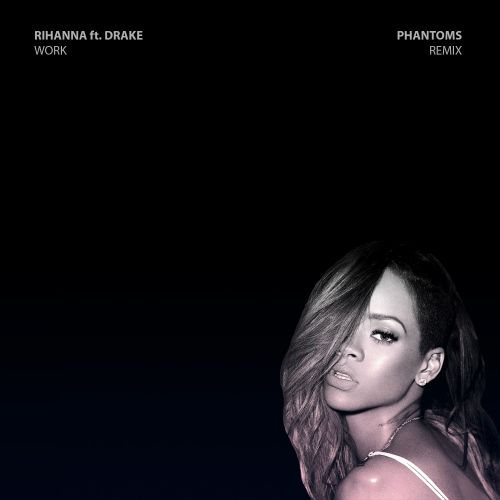
In this guide, we're going to go through everything you need to know about how to remix a song so that by the end, you'll have all of the knowledge and tools you need to make the best remix possible.
What Is A Remix?
A remix is a track that has been contorted or altered in such a way that it is reminiscent of the original song, though has been changed so much that it stands as its own, separate entity.
A producer will get stems from original songs, which are individual audio files (bass, vocals, guitar, drums), and compose and arrange them in a way that they create a final track.
Why Would I Want To Remix A Song?
Yes, you could continue to only put out original tracks and never make a remix in your life, which is totally fine. Trying to enter remix contests with hundreds or thousands of other music producers just to land a spot on your favorite artist's remix album seems difficult right?
Well, if you think about it, you're up against the world anyway when it comes to being a music producer, so working with stems from experienced producers for a chance to land a spot on an album or EP, or simply win a remix contest, is an excellent opportunity.
Winning a remix competition is a great way to get your name out there and enhance your reputation. Some remix competitions open the doors up to labels or other big artists.
A lot of time, remix competitions will publish an official remix on an EP or album, giving the music producer even more exposure. Of course, it is important to know how to set yourself apart as a remixer, which is what we would like to discuss in this article.
First, however, let's talk about the legalities of remixing.
The Legal Aspects Of Remixing a Song
Is It Legal To Remix a Song?
It is illegal to take a random song, remix it, and share it online without permission. Even if you only use a split-second of that track, you need permission from the song's copyright holder to redistribute it.
Just because you are posting to free streaming sites like SoundCloud and YouTube does not mean that it is legal.
What Is The Difference Between a Bootleg and a Remix?
Many producers often inquire about the difference between bootlegs and remixes. An official remix is something that an artist or record label pays or asks a producer to make.
An official remix is something that an artist or record label pays or asks a producer to make.
A bootleg, on the other hand, is an unofficial iteration of the song, which is typically illegal. DJs will often make bootleg copies of popular music to play at live shows.
When it comes to selling music, bootlegging is illegal, even though many producers share bootleg remixes online.
How Do I Get Permission To Remix a Song?
One way that you can get permission to remix a song is by entering remix competitions that are open to the public, as they provide public permission and stems. You can also reach out to the original artist and ask for their permission. If the original artist is unsigned or part of a smaller label, getting permission to remix their song might be pretty easy.
For big labels, you might have a difficult time, as they tend to be far more protective of their works.
What If I Don't Get Permission?
Let's say that you can't get permission for the song you really want to remix. Maybe the artist isn't getting back to you or there aren't any remix competitions out with the song. Maybe the person did reply and said you could NOT remix their track.
Maybe the artist isn't getting back to you or there aren't any remix competitions out with the song. Maybe the person did reply and said you could NOT remix their track.
Whatever the case is, if you were not given permission to create a remix, you cannot do so legally.
Will you get arrested or fined if you do? VERY unlikely.
Of course, there is the risk that your song will get flagged from the streaming site for copyright infringement. This happens all the time on sites like SoundCloud and YouTube. If this happens to you often, the platform might just shut your account down altogether.
What Do I Need To Remix A Song?
Stems
To remix a song, you will need the stems. As we said before, stems are the individual audio tracks from the original project file.
These stems can be found in a number of places, including DJ Pools, sample packs, and remix contests.
You might start by checking out Loopmasters or Splice for sample packs, as you'll be able to find thousands of high-quality sample packs that you can use to remix publicly. From vocal chops to full-on licks to drum grooves, these sites have it all. Plus, you never have to worry about the legality of using a sound you download off of these sites in your remix, as they are free from copyright.
From vocal chops to full-on licks to drum grooves, these sites have it all. Plus, you never have to worry about the legality of using a sound you download off of these sites in your remix, as they are free from copyright.
To find acapella tracks or the original vocals from popular songs, you might want to try websites like Acapellas4U, DJ City, or BPM Supreme. Having vocal stems can come in handy when trying to craft high-quality remixes.
Lastly, you can find stems through remix competitions. An artist or label will often provide a popular website or platform with existing stems for producers to work with. Because they have given public permission for producers to use these stems, it is completely legal and even encouraged.
Digital Audio Workstation (DAW)
When choosing a DAW for your remix, there are a lot of options. Producers often ask us,
Can I remix songs on Garageband?
Can I remix songs on Audacity?
Can I remix songs on Ableton?
You get the point.
The thing is, you can remix a song on just about any type of music editing software, whether it is Audacity, Garageband, FL Studio, Pro Tools, or Ableton. There are even mobile apps that you can use to remix songs.
How to Remix a Song In 7 Steps
- Pick the right track
- Figure out your direction
- Figure out the key and BPM
- Prep your stems
- Choose the stems you want to use
- Craft your remix
- Mix and master your remix
1) Pick the Right Track
When picking an original song to remix, it is important that you choose your song carefully. We recommend only remixing songs that you like. If you hear an original song and your first thought is to change it up completely, then you should probably go with another track. An original song should already feel exciting to you to the point that you want it to use for an official remix.
When looking for songs to remix, look for:
- Songs that have catchy hooks (synth leads, vocals, basslines).
 It should be memorable enough that no matter how much you alter it, listeners will know what it is.
It should be memorable enough that no matter how much you alter it, listeners will know what it is. - A BPM that isn't more or less than 10BPM from your track.
Classic tracks can be a great choice if you are a DJ that is trying to get exposure at the club, such as an old Motown song or a 90s throwback.
2) Figure Out What Direction You Want To Go
As you sit down to create your remix, think about the direction that you want to go. Do you want your remix to be something people can chill out to or do you want it to blow people's eardrums in the club?
If you're looking to win remix competitions, then you might need to consider the artist, label, or company that put out the contest to see what they are looking for.
3) Figure Out the Key and BPM of the Original Song
When you get the stems for the original song, you need to do some digging to figure out the key and BPM of that track. The majority of the time, remix competitions will provide this information.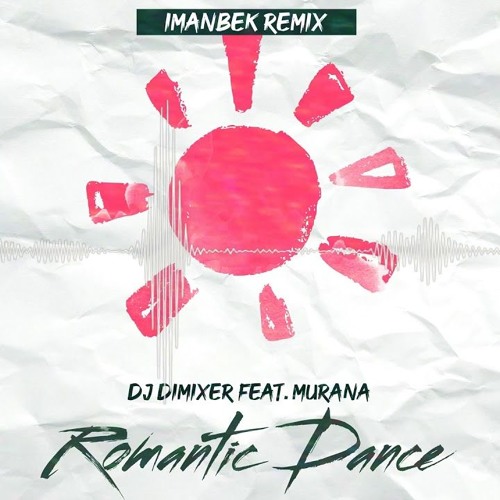 However, if you're making bootleg remixes, you might have to figure it out on your own.
However, if you're making bootleg remixes, you might have to figure it out on your own.
Knowing the key can help you work much faster, in that you'll be able to find samples and chord progressions that mesh well with the hook on the original song. An easy way to ruin a great remix is by using sounds that aren't in the right key.
TuneBat is a great place to find information regarding the key and BPM of an original song.
4) Prep Your Stems
The stems are the individual pieces of the original song that are usually supplied to a music producer for a remix. These stems are separate files that you can chop, mangle, and mix to your liking to create a unique sound.
Typically, stems are broken down into several categories, including bass, drums, vocals, keys, guitars, FX, etc. Start by arranging the stems in your DAW and line them up so that you can see what you have to work with.
In organizing your stems, you'll be able to see which of the elements you should use in your remix, as well as which elements you can scrap.
5) Choose The Stems You Want To use
Once you have your stems organized, you will want to put some thought into which stems you should use. You will have more freedom to get creative with your track the fewer stems you decide to use. This can be great if you want to impart your own sense of musicality and creativity on the track.
Of course, you don't want to get rid of the original too much, as it can lose the sense of being a 'remix.'
First, you'll want to decide which of the stems must stay in the remix. For example, if you decide that the original vocal is a necessary component of your remix, keep that stem in your session. You can (and maybe should) process, chop, and rearrange this vocal in the future, but just make sure that it is there and remains recognizable.
Next, figure out which of your signature sounds you want to use, whether it is a synth lead, a synth bass, or a few drum samples, to see how they fit with some of the original stems.
Lastly, get rid of the unnecessary parts that don't fit with your signature sound. For example, if your signature sound is funk guitar and the song has some washy, reverb-drenched guitars, you might consider removing those stems.
6) Crafting Your Remix
The way in which music producers remix a song will differ from producer to producer. However, for those just starting out, we figured we'd provide you with a few ideas as to how you can begin crafting a quality, creative remix.
Mess With the Melody
You could start by taking the existing melody and using a different instrument to represent it, keeping the same notes while changing the order that they are played in. If it is a four-bar melody, maybe consider looping the first bar three times, reversing the second bar, and letting the fourth bar turn it around back to the beginning.
You might even consider keeping the original melody, though heavily processing it so that it gives the listener something fresh.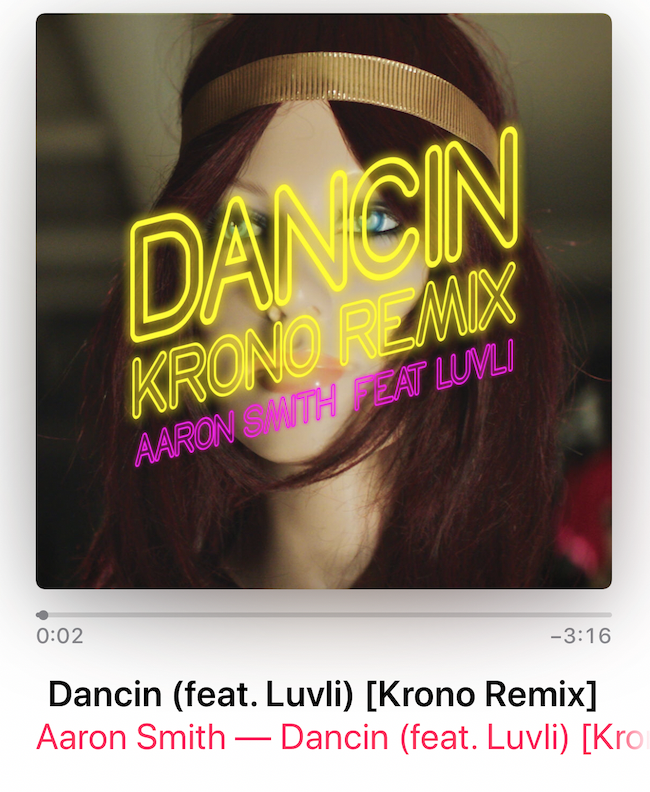 Vocal chops are great for this, as you can simply maintain the original melody while altering the rhythm or sonic characteristics.
Vocal chops are great for this, as you can simply maintain the original melody while altering the rhythm or sonic characteristics.
Use Your Chord Progressions
One incredibly unique way to remix a song is by building your own chord progression under the existing melody. Of course, you might need some basic knowledge of music theory to alter the chord progression, though you can also try and work by ear, as many music producers do.
You could even change the way that the chord progression is played underneath the melody. For example, the original song might have a sustained bassline acting as the foundation. You could take the same notes and use your own bass or synth bass to give it a funky, syncopated vibe.
Use You Own Drum Samples
You might consider focusing on the rhythm of the drums first if you plan on remixing your song with a different BPM altogether. In doing so, you'll be able to build melodic ideas on top of it based on the rhythm.
By placing your own drum samples underneath a melody, you can figure out the energy level and groove to help you envision the rest of your remix. Plus, you can use your drums to put your own sonic stamp on the remix.
7) Mix and Master Your Remix
You might be able to make an incredible remix, though if you can't present it in a polished manner, then it won't stand up with other remixes out there. You need to mix and master your track.
Labels will often master all of the remixes they receive together so that they have a similar sound from one to the next. However, you must still provide them with a polished mix.
If your remix isn't for the label, then you'll have to make sure you get it mastered on your own .
You can either choose to mix and master on your own or send it to professionals to get it done. We highly recommend sending your tracks to professionals, as they can look at it from an objective standpoint, using tools like EQ and compression to help all of the individual parts feel cohesive.
Elements of a Great Remix
There are no golden elements of a great remix that we can give you, as remixes are often very different.
What we can provide you with, however, is examples of great remixes that can give you ideas of where to go.
For example, let's look at Mark Ronson's remix of Angel Olsen's "New Love Cassette." Mar Ronson took this deep cut from Angel Olsen's All Mirrors album, stripped it back, and added a ton of synth sounds to it to make it unique.
Ronson even throws listeners a curveball with a doom-like wall of synths during one passage.
In another instance, St. Vincent remixed one of the lead singles off of the new Beck album, Hyperspace. Annie Clark, the lead singer of St. Vincent, decided to add some playful, rhythmic elements to the track, imparting some uniquely 70s elements on this radio hit.
One of the most surprising remixes in recent days was the Totally Enormous Extinct Dinosaurs remix of LA Priest's "Beginning" off of the artist's second album GENE.
This track was an absolute standout on the album, bringing funky and lo-fi bedroom pop vibes to the masses. Of course, in expected fashion, British DJ and producer Totally Enormous Extinct Dinosaurs took the song and gave it a complete makeover, turning it into a hi-fi club hit.
How To Win Remix Competition
When you enter remix contests, you will usually give your track to judges. These judges are often looking for a creative take on the original song. You don't want to stray so far from the original song that the remix begins to compete with it. Try to make it as complementary as possible.
Think of ways in which you can slightly alter original songs, making them slower, faster, harder, softer, better for the club, or chilled out.
In a remix contest, the judges will listen to hundreds, if not thousands of submissions. They want something that will pique their interest. By providing them with a creative and unexpected twist, you will stand out from the crowd.
We recommend looking at what other remixers have done for the particular artist that you are remixing, as it will give you some insight into what they've liked in the past.
Here are a few ways in which you can get creative to stand out in a remix competition:
- Sample original sounds in the song and use them as transitional elements
- Chop up the vocals in a unique way
- Create a different groove with the percussion sounds in the original
- Raise or lower the pitch of your remix with warp mode
- Drastically change the sound of the original stems with heavy processing
It is all about being unique and distinguishing yourself from the many remixes that the judges are listening to while highlighting the original magic of the song.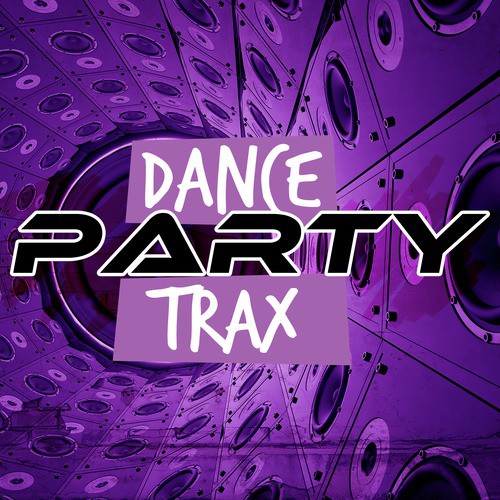 Failing to do either of these things will likely land your track in the trash pile.
Failing to do either of these things will likely land your track in the trash pile.
To a certain degree, the amount of public support your remix gets is important too. If the remix competition is based on votes, get as many people to vote for you as you can, including family, friends, and acquaintances.
Pro Tips For Making Remixes Faster (And Better)
Set a Deadline For Yourself
When it comes to making an official remix, an artist or label will typically provide you with a deadline for when they want the track completed. The same thing goes for remix contests. If you're making your own remix, you must set your deadline on your own.
We recommend setting a deadline from two to three weeks and STICK TO IT.
Of course, this doesn't mean you should rush it. Just use the spare time that you have available to work on your remix. Make sure to send it out to friends that you trust to get their opinions and critiques.
Use The Best Elements of the Original Track
If you have a good remix, the listener should immediately recognize the original track that it came from. It is up to you to make sure you pick the right parts. For your standard pop track remix, you might take just the vocal. If you're remixing an instrumental track, you might go for the lead guitar, bass, or synth.
Ask yourself,
What makes the original track special?
Your remix should be built around that thing.
For the most part, as long as you have the original vocal in your track, you probably won't have to use any other parts. Of course, if you can use as many parts of the original track as possible, then that's a good thing!
For electronic music, however, we always recommend using your own drums to differentiate it.
Know Your Key and Tempo
When remixing an original song, know what key it is in and what tempo it's at so you can fit it into your remix. Yes, you can always time-stretch the various elements or re-pitch them, but those kinds of tools can only work so hard before things start to sound wonky and unnatural.
Yes, you can always time-stretch the various elements or re-pitch them, but those kinds of tools can only work so hard before things start to sound wonky and unnatural.
On the other hand, if you're going for a chipmunk vocal, then by all means go nuts!
For the key, we recommend keeping it with three whole steps of the original song. For the tempo, +/- 20BPM is usually a good starting point.
Re-Play The Hook
The original song that you work with might have a really catchy hook that sounds great for the original track, though doesn't work as well for your particular genre. In that case, you might decide to re-do the hook with an instrument that better suits your vibe.
For example, as a deep house artist, you might choose to re-play the original hook a reverb pluck. As a trance artists, on the other hand, a larger-than-life supersaw might be a better choice.
K.I.S.S.
Keep It Simple Stupid!
Sorry if that was a little mean. It's just one of our favorite acronyms for reminding ourselves when we've gone too far!
It's just one of our favorite acronyms for reminding ourselves when we've gone too far!
You don't want to go so far that you've completely obliterated the original track. Just make sure you have the hook present in your remix and that it sounds like you.
Start with the hook and build the remix around it to make it sound as concise and cohesive as possible.
Listen To Other Remixes
If you aren't sure where to start, or if you get stuck in a roadblock during the remixing process, go and listen to some other remixes to gather some ideas. In doing so, you can get an idea of how that particular music producer is using the hook or arranging the track.
Put a Unique Twist On It
By using signature elements and sounds, you can give your remix a personal touch. If you've spent time developing your own samples, presets , and processing chains, then this should be fairly easy.
Plus, using sounds and elements that you are already familiar with can help speed the production process up. Never be afraid to reuse sounds that you've used before, as they will sound different in different contexts!
Never be afraid to reuse sounds that you've used before, as they will sound different in different contexts!
Fans of yours will recognize those sounds right away and know exactly who they are listening to. Of course, don't be afraid to intersperse new and creative sounds with your usual suspects as well.
Song Remixing FAQs
Is It Legal To Remix a Song?
It is not legal to simply remix a random song of your choosing and share it online. You must get permission to utilize the portion of the original song in your remix, no matter how insignificant the portion of the song is.
Can I Remix Music And Put It On YouTube Without Getting Sued?
If you get permission from the label, artist, or whoever owns the copyright to the song to remix it, then remixing a song and putting it on YouTube is legal. However, if you don't get permission and share the song anyway, you could find yourself with legal troubles.
How Much Does It Cost To Remix a Song?
Depending on how long and complex the remix is, you can expect pay anywhere between $200 and $400 for a remix. This typically amounts to 4-5 days of work. However, the rate can drastically change based on the producer and whether or not it is an official remix or not.
This typically amounts to 4-5 days of work. However, the rate can drastically change based on the producer and whether or not it is an official remix or not.
Can Audacity Remix Songs?
While Audacity isn't the best software for making a good remix, you can import an existing song into Audacity and work with the audio to remix it. Many people even use Audacity to isolate vocals! However, there are much better DAWs out there that we would recommend, including Ableton and FL Studio.
What Is the Best Free Remix Software?
When it comes to finding the best free music remix software, some of our favorite free options include:
- Audacity
- Ashampoo Music Studio
- Ocenaudio
These free pieces of audio software are surprisingly powerful, perfect for mixing stems, trimming samples, or recording audio.
Can I Remix Songs On My Phone?
Absolutely! There are plenty of great apps for making a good remix on your phone.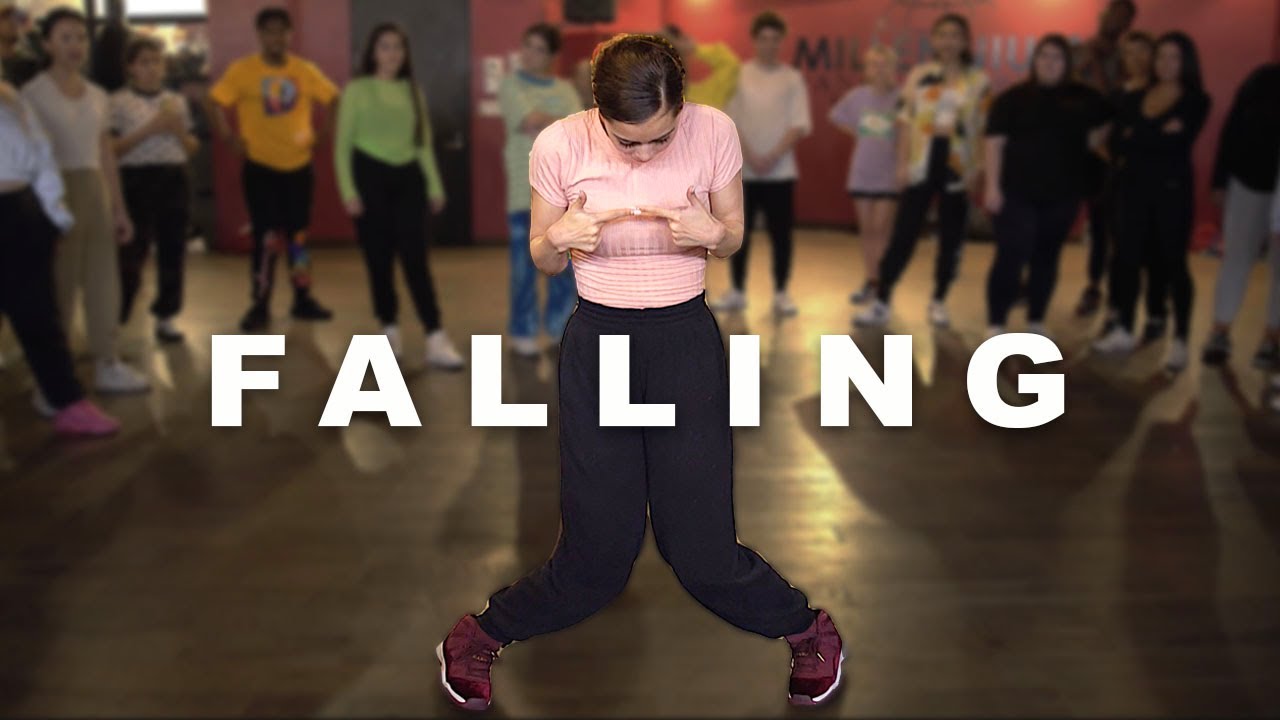 If you have an iPhone, for example, Garageband should come with it for free. You can use Garageband to import stems and use the available virtual instruments on the platform to develop new sounds.
If you have an iPhone, for example, Garageband should come with it for free. You can use Garageband to import stems and use the available virtual instruments on the platform to develop new sounds.
Can I Make Money From a Remix?
When it comes to making an official remix, the label will often pay the producer a flat fee for the final remix. In other cases, the label will create revenue splits with the remixer and the songwriters for backend earnings. In short, yes, you can make money from a legitimate remix.
Who Owns the Copyright Of a Remix?
When you make a remix, you become the copyright owner of the remix. However, you share the overall copyright with other parties too, including the owner of the song, the owner of the publishing, and the owner of the original master recording.
Do Remixers Get Royalties?
More often than not, a remixer is not paid any royalties. The backend money will usually go to the label and the original artist or songwriter. If you are working with a major label, however, and you have a lot of pull, you might be able to work royalties into the remix agreement.
If you are working with a major label, however, and you have a lot of pull, you might be able to work royalties into the remix agreement.
What Is The Difference Between A Cover and a Remix?
Remixes use material from the original song to create a new track by rearranging and altering the original idea. A cover, however, is a brand new performance of the original song with completely original instrumentation and styling, which does not use any of the original source material.
10 Step Instruction on How to Mix Drum & Bass
© James North/ Red Bull Content Pool
Music
Read these easy tips from superstars Toddla T and the Massappeals.
By Graeme Bateman
Read 5 minPosted on
Remixes are an essential part of the dance music world: they open up original tracks to new audiences and give new life to golden classics.
Recorded below, filmed at Red Bull Studios in London, DJ, producer and remixer Toddla T is working live with Massappeals producer, British grime MC Kamakaze and vocalist Morgan Monroe on their recent track Last Night. Using this video, we offer 10 basic steps for creating a drum and bass remix.
1. Select a genre. [00:05:22]
Think about what kind of music you want to create - this way you will determine the stylistic criteria that you can work with and start the creative process. However, whatever genre you choose, you don't have to strictly adhere to it. As you can see from the video, although jungle was originally chosen, the track soon took on the traits of a deeper and more fluid d'n'b vibe. After all, rules are made to be broken.
2. Select the temp. [00:08:26]
Electronic dance music genres tend to have a limited tempo range. For example, house usually has a tempo of about 115-130 beats per minute, while drum and bass usually has a tempo of 160 to 180 beats per minute. Jungle was born between hardcore and drum and bass, and this is reflected in its tempo range. For this remix, Toddla settled on the tempo of 160 bpm, which was standard for the genre in the 1990s.
Jungle was born between hardcore and drum and bass, and this is reflected in its tempo range. For this remix, Toddla settled on the tempo of 160 bpm, which was standard for the genre in the 1990s.
3. Select the appropriate passages. [00:10:40]
Listen to the source tracks, each one in turn, and note everything that caught your attention. Everything that seems uninteresting, delete. If in doubt about a particular passage, throw it in your “maybe” folder. Most digital workstations allow you to group tracks so that one of these groups can be used as a folder at the bottom of the project, so you can easily find the passages you need later.
4. Start from the bottom. [00:11:06]
As the name suggests, drum and bass is based on these two elements: drums and bass. So you can start with the drums and build a bass line around them, or, as Massappeals did in this video, go in reverse: play the original bass motif, adjusting it to a new tempo and creating new passages from scratch based on the classic reese bass sound.
5. Add something of your own. [00:19:36]
It is important to add something of your own to any remix, so think about how to change the elements of the original melody, or write your own. Throw a sample from the original into the sampler and experiment with it - so you can create something new while retaining the original motif.
6. Check your mix in mono [00:35:10]
Toddla shares some useful tips about stereo effects. When using polyphony, phasers, echoes, and delays, it's important to test the entire mix in mono to make sure it doesn't have phasing issues. They happen when sounds on the left and right side of the stereo field cancel each other out (a phenomenon known as phase cancellation).
7. Expand the Loop [00:41:30]
Even the most experienced musicians sometimes get stuck on repeating the same 8-, 16- or 32-bar cycle, not knowing what to do next. It is best to skip this stage as soon as possible. Luckily, this is easier with remixes than with most projects. Think about how the selected passages from the original track can be used in other parts of the remix. We haven't gotten to the stage of full arrangement yet, but if we have a few key parts ready now, it will be easier to bring them together later.
Think about how the selected passages from the original track can be used in other parts of the remix. We haven't gotten to the stage of full arrangement yet, but if we have a few key parts ready now, it will be easier to bring them together later.
6 min.
Toddla T and Moss Kena
British producer Toddla T and vocalist Moss Kena present us their exclusive performance.
Don't forget to download the free Red Bull TV app and follow the music world on all your gadgets! Download app
8. Program the drums [00:51:51]
If the original doesn't have the characteristic percussion that can be considered its hallmark, it's always better to use your own. Add whole loops to quickly create a drawing, or cut out individual parts and write your own scheme using MIDI. Massappeals uses both methods to create a remix, loading a classic drum beat into a sampler to catch a single beat, while chopping, rearranging and layering entire loops to create something new.
9. Process the sound [1:00:28]
Musicians very rarely add a sound or sample to a mix and leave it as is. Even just cutting the low end to remove unwanted bass frequencies can make a big difference in the sound of a finished track. At this stage, Toddla collects all of Massappeals' drums together (except for the kick) and crushes them. The idea is to make the sound "red" by using distortion, compression, saturation and limiting, gluing them together and separating them in a rougher and more aggressive tone. The choice of technique depends on the material and the desired result, but mixing is often a good idea.
10. Arrangement [01:24:36]
Perhaps the hardest part of making any music is arranging, but genre standards can give you a couple of hints. Choose one of your favorite drum and bass tracks, add it to your project and learn its structure. Note that sections contain four cycles, usually 16- or 32-bar. Arrange based on this structure and think about how the DJ would play the track. Don't forget that most electronic dance music is made with DJs in mind, and simple arrangements are often the most effective.
Don't forget that most electronic dance music is made with DJs in mind, and simple arrangements are often the most effective.
In this article
All episodesMusic
How I learned to write dance music and started releasing on labels — Music on DTF
A big story about finding yourself in creativity. With pictures and music.
14600 views
Hi, I'm Muchkin. I write music. I make money with soundtracks for indie games, and for my soul and career I also make tracks in the genre of melodic house and techno. About how I came to composing, I wrote in a recent text. Now let me tell you about my path in dance music.
Screenshot of my latest project so far
Beginning
Somewhere in the ninth grade, I first heard Prodigy - Voodoo People (Pendulum Remix) as part of a mix from DJ Stroitel. I got crazy and started to get interested in drum and bass. I listened to Pendulum, Noisia, Spor, danced drum and bass dance, which we called drumstep.
Then I thought that I also want to write the same energetic cool music with rich drum parts. I had no idea how it was done, and the search led me first to some kind of MIDI editor, in which I made a couple of songs. And then I found FL Studio, a sequencer that I've been using for over a decade.
The first tracks were awful.
I shared them under a shameful pseudonym on PromoDJ, in an active community of fellow beginners. We intelligently criticized each other's tracks, not knowing anything at all about how music is created. But it's always like that when you start.
I once read the idea that you need to make the first 100 songs as quickly as possible, because after them normal music will follow. In my experience, yes, something like this is
Toward the end of school, a dream began to form in me: I will learn how to make cool music for the university, and by the end of the fourth year I will become, if not a world star, then certainly a professional and respected music producer (a person who earns money by creating and performing electronic music ).
University
In fact, for four years at the university, I basically did only three things: studied (albeit well), played video games and suffered from fears and anxieties. Despite the fact that the dream still lived somewhere on the border of consciousness, and I considered myself a music producer, writing tracks faded into the background.
It wasn't because I was lazy or because I didn't want to make music. Just because I thought of a great success in advance, creativity turned into a hard and painful task. High anxiety, disorders, traumas, and just the peculiarities of the psyche (which I realized only ten years later thanks to psychotherapy) exacerbated the situation.
For example, I wrote this track for a whole year and spent more than hundred hours on it . That was the pace at which I produced finished works at that time.
Funny story. Born in Space found some cunning guy on PromoDJ and wrote me, they say, let's release it on my label. I went nuts from the word "label" and agreed. We even signed some kind of contract through the Proton system. After that, the man disappeared. Until now, the composition can be found on streaming services - he released it ten times, probably, and all under different "labels".
I went nuts from the word "label" and agreed. We even signed some kind of contract through the Proton system. After that, the man disappeared. Until now, the composition can be found on streaming services - he released it ten times, probably, and all under different "labels".
I didn't make a dime from it, of course. I suspect that he is also
Among my other works during this time, one can single out this psychedelic “neurofunk”, in which everything that is possible is not in tonality. When I wrote it, I did not yet know what tonality was.
This was supposed to be an intro for my friend's YouTube show, but it never launched.
At the university, I wrote little music, but this does not mean that I did not develop creatively. I listened and analyzed bass genres a lot and sometimes through suffering I made tracks. Many did not finish. So there was progress, but very slow.
This composition also took about a year and 60-80 hours of work.
My music from this period seems to meet some minimal requirements of the genres (the structure is readable, the sounds are more or less intelligible, the kick and snare give some kind of energy, sometimes there is even a sub-bass), but they are crooked, poorly thought out and uninteresting .
I just used samples, notes and instruments that seemed appropriate and didn't think about the big picture, melody or atmosphere. And, I suspect, for the better. If I had been worried about this as well, then anxiety would have completely crushed me.
By the way, my suffering also had some advantages. From the very beginning of working in FL Studio, I decided that I needed to create all the presets for the synths myself, and so I did. By the time I received my diploma, I had a good knowledge of the standard synths of the program and even a small library of presets.
By the way, about the diploma: I wrote this experimental composition dedicated to a headache closer to the defense, which is symbolic.
Work
After my bachelor's degree, I went to the master's program and at the same time started looking for a job. For a year and a half, I was doing all sorts of small jobs (once I even made the whole foley for a short film). I didn’t do much music, although I was able to complete a couple of projects.
For example, this future beats track inspired by Ivy Lab and Noisia Radio selections.
And an old school drum and bass remix for Dorn (there was a PromoDJ contest).
I was looking for ways to make money on music: I applied to local game and recording studios, I tried my luck in creating beats and stock tracks. In vain. As I studied the market and read the stories of more successful producers, an unbearable, terrible thought formed in my head.
To achieve something, you have to work very hard
That explained a lot.
At the beginning of 2017, I was accepted to DTF. Since childhood, I loved games, I read LKI, the Land of Games and Igromania, so I was very happy with this opportunity.
Since childhood, I loved games, I read LKI, the Land of Games and Igromania, so I was very happy with this opportunity.
I was part of the editorial staff for almost two years. At this time it was difficult to find the strength and time for music. I watched tutorials, analyzed other people's tracks, replenished my database of samples and presets, but completed projects during this time can be counted on the fingers of one hand.
Weird downtempo project - time.
Dubstep with the voice of YouTuber Jacksepticeye - two.
Gloomy base house - three.
Drum and bass, started back in 2016, four.
I tried to send each of these tracks to labels, but they were not taken anywhere. I was surprised: how is it that they have everything. And powerful basses, and cool drums, even some interesting effects. Isn't that enough?
Oh, how little I understood.
Composing
In the spring of 2019, I started building a career as an indie game composer.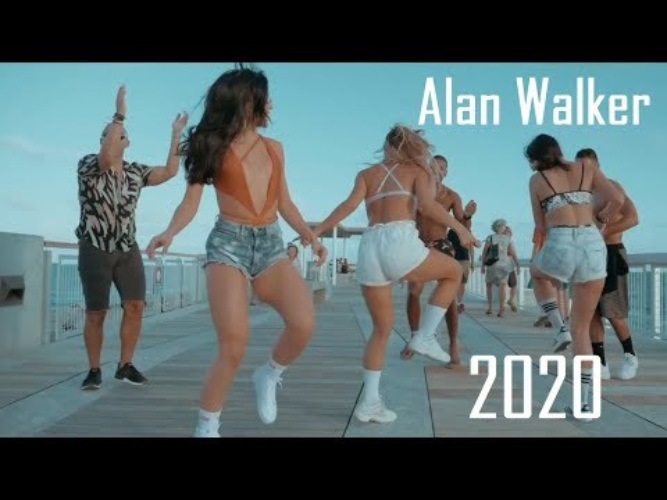 A few months later, this occupation even began to bring in some money and soon became the main one for me. (You can read about this path here.)
A few months later, this occupation even began to bring in some money and soon became the main one for me. (You can read about this path here.)
I found a way to make money with music and immersed myself in creativity. A little bit not the direction that I dreamed of, but still it was progress. Working on the soundtracks, I learned to feel the music better, learned new techniques and added to my own libraries even more.
As for dance tracks, at the end of 2019, aggressive and fast base house was popular, and I tried to sit on this hype train.
But no labels took the track, so I released it myself through distributor DistroKid. It was my first "adult" release - the one that appeared on streaming services. So far, I have earned exactly $0.03 on it. That's 17 auditions.
Back in the beginning of 2020, I made time for the LEAVEMEALONE halftime track.
The flops over the past couple of years made me wonder: what's wrong with my music? Why doesn't anyone want to take it? Reflection and reflection led me to an important conclusion: in the first place, I do not make the music that I really want.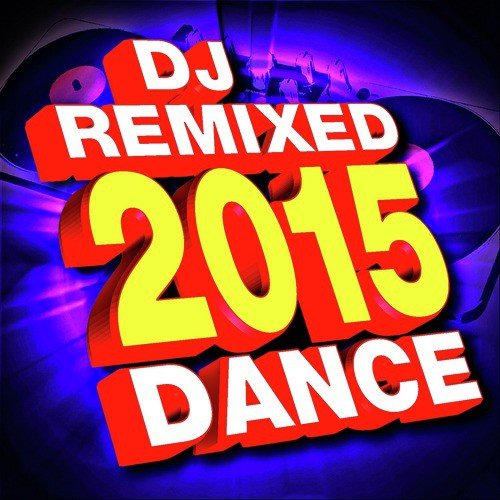
I got interested in making music thanks to drum and bass, then I started listening to dubstep and electro house, and for some reason I always felt that these genres were what I needed to work on. But as soon as I listened to myself a little (which I had never done before), it turned out that I had nothing to express through bass music.
So I spent the following months looking for genres that would most accurately reflect my inner state. They were melodic house and techno.
Brute force
Since April 2020, I have decided to get into dance music properly. Since I used to be able to create compositions only through force, I came up with a challenge for myself: to finish one track every month.
The logic was like this. By forcing myself to work on dance compositions month after month, sooner or later I had to develop all the necessary skills needed to create cool music.
I was going to basically brute force my creative powers
The first track turned out to be clumsy. The mixing is murky, there is not much development, both drops are arranged as if it were a summer banger, although a soulful melodic techno was conceived. But for starters, it will.
The mixing is murky, there is not much development, both drops are arranged as if it were a summer banger, although a soulful melodic techno was conceived. But for starters, it will.
This track (and several others) I released again via DistroKid. Even tried to buy ads for him through Facebook. There were still few auditions (39 to date), but I was resentful of the label system after so many rejections and was determined to make a name for myself.
The next, May composition Pasturage was much softer. Birds, forest, nice sound design and summer rain atmosphere.
For this track, I also bought advertising. This time I set up the ad better and invested more money, so the output was more tangible. Now he has 138 plays.
The June track Arcane turned out to be mysterious and attractive, like a Celtic forest. Hence the name.
I didn't commission advertising for him because my determination to advance myself in the music industry began to fade. I didn’t pour so much money into advertising tracks, but there was no more extra money.
The conclusion was that you can break through on your own only in two cases: if you have a lot of money for advertising (I didn’t), or if you know how to do cool PR in social networks (I didn’t know how). So I started looking towards
labels again.
Arcane was not taken to the labels (I did not even hope), but they took Autarca - the July track. Here's a snippet of it, and you can listen to it in full here.
It was released as a compilation on the sub-label of a small St. Petersburg publishing house Polyptych. I knew perfectly well that this would not bring me any money or popularity, but I signed the contract anyway. You have to start somewhere.
The next track was a bit hooligan Help a Robot. I didn't send it anywhere, because big labels wouldn't take it, and it was long and tedious to look for small labels with such music. How do you even google them? "Labels with frivolous electro-house"?
In autumn I decided to make a three-track mini-album. For some reason it seemed to me that labels were more willing to take EPs than singles.
For some reason it seemed to me that labels were more willing to take EPs than singles.
Even by this moment I had heard a lot of music in the selected genres and realized that in melodic house and techno, few people make tracks shorter than six minutes. So from now on, all my new compositions slowly fade in and out.
In general, the music has become less hurried and more conducive to immersion and thoughtful listening
As you might expect, my plan to boost my chances with labels with the EP didn't work out very well. The release was eventually taken to the same Polyptych Limited (it will be released on July 5), but I was hoping for something bigger.
In December I finished the new track Rewired and decided to take a break. Working non-stop for nine months (and I also did soundtracks) without tangible results led to the fact that I just burned out.
Rest helped me rethink my priorities and figure out which way to go. I stopped caring too much about labels and started focusing more on creativity and self-expression. Plus, psychotherapy helped (and still helps) to listen to yourself better.
I stopped caring too much about labels and started focusing more on creativity and self-expression. Plus, psychotherapy helped (and still helps) to listen to yourself better.
Rewired was included in the compilation for the Moscow label ONESUN (will be released sort of in the summer).
Opening
I wrote the next composition at a more relaxed pace: burnout forced me to abandon the "one track per month" mode. Simultaneously with the work on the track, I was doing research. He carefully studied music in the chosen genres, pestered successful producers with questions, whom he could reach.
The result was the biggest takeaway of all time: major labels need unique music first and foremost. One that has not yet been
Within the genre, of course, although the boundaries between melodic house and techno are blurred.
How to achieve uniqueness? For me, the answer is simple: it comes from the uniqueness of the psyche. If you learn to listen well and express yourself adequately, then creativity will be unique. Therefore, when creating Bird Law in January 2020, I tried to listen as often as possible to what melodies, sounds, effects and just decisions resonate with me.
If you learn to listen well and express yourself adequately, then creativity will be unique. Therefore, when creating Bird Law in January 2020, I tried to listen as often as possible to what melodies, sounds, effects and just decisions resonate with me.
This track doesn't just meet some technical requirements, it's undeniably my . For example, the title is taken from a comic book that I really like.
It's the law
And the theme of birds in it is not only because of the name, but also because these animals (but not all) touch me and my wife very much. And also partly a track about the love that I feel for my wife, and this has something in common with the comic book. In general, a warm work about good things. The ones in me.
I don't know how noticeable this is to the outside listener, but I see a massive improvement over the previous compositions. He was even taken to a more serious label - the Italian Natura Viva. They promised to release it as part of a compilation.
